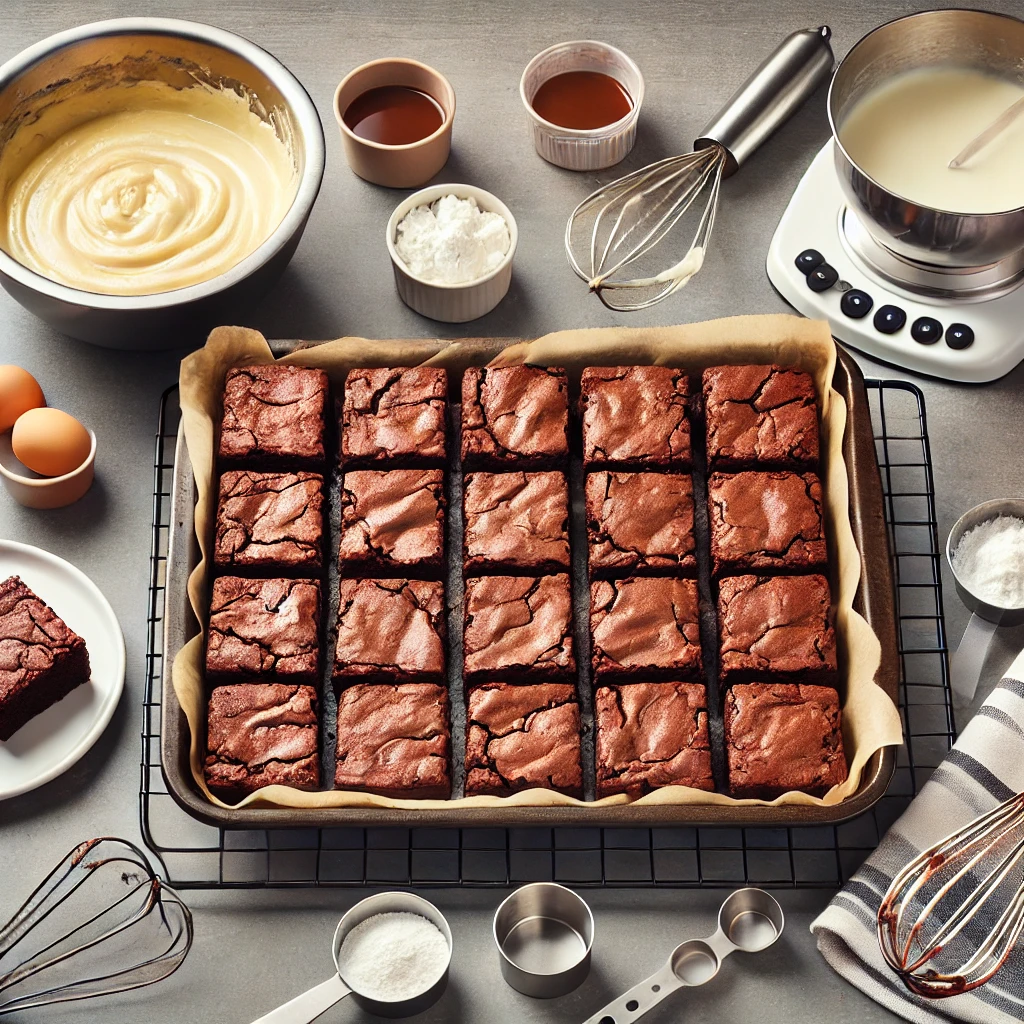
Baking brownies might seem simple, but even experienced bakers make mistakes that can affect the texture, flavor, and appearance of the final product. In this guide, we’ll highlight common errors and offer tips on what not to do when baking brownies. Whether you’re aiming for fudgy brownies or experimenting with different types, avoiding these pitfalls will help you achieve the best results.
If you’re looking to explore unique brownie twists, check out the ultimate banana brownie recipe for a delicious alternative.
Common Mistakes When Baking Brownies
Overmixing the Batter
One of the most common mistakes bakers make is overmixing the brownie batter. When you overmix, you incorporate too much air into the batter, which leads to cakey brownies rather than the dense, fudgy texture many people desire. To avoid this, mix just until the ingredients are combined.
- Use a whisk or spatula instead of an electric mixer to control the mixing process.
- Stop mixing once the flour is fully incorporated.
For more details on how ingredients affect brownie texture, take a look at this comprehensive guide on brownie textures.
Using the Wrong Pan
The type of pan you use plays a crucial role in how evenly your brownies bake. Glass pans or dark metal pans can cause uneven baking, leading to undercooked centers and overcooked edges. Instead, opt for a light-colored metal pan for even heat distribution.
If you’re curious about other factors that contribute to brownie success, check out the guide to different types of brownies.
Temperature and Timing Errors
Using Cold Ingredients
Using cold ingredients like eggs or butter can negatively impact the consistency of your brownie batter. Cold butter or eggs can cause the batter to seize up and become lumpy. For best results, ensure your ingredients are at room temperature before mixing.
- Allow butter and eggs to sit at room temperature for 30 minutes before starting.
- If you’re in a hurry, warm eggs by placing them in a bowl of warm water for a few minutes.
Overbaking the Brownies
One of the most common mistakes is overbaking the brownies. Brownies continue to bake after being removed from the oven, so if you leave them in too long, they’ll become dry and crumbly. You want to take them out while the center is still a bit soft.
- Use a toothpick to check for doneness. It should come out with a few moist crumbs, not clean.
- Keep an oven thermometer handy to ensure your oven is at the correct temperature.
Ingredient Mistakes
Using Low-Quality Chocolate
The quality of chocolate you use makes a significant difference in the final product. Using low-quality chocolate can result in grainy, less flavorful brownies. Opt for high-quality chocolate or cocoa powder to ensure a richer, smoother brownie.
Substituting Ingredients Without Caution
While it’s tempting to substitute ingredients like butter with oil or change flour types, doing so without understanding how these ingredients behave can drastically alter your brownies. Always research how a substitution will affect the texture and taste before making changes.
- Stick to the recipe when possible, especially if you’re aiming for a particular texture.
- Use substitutions carefully, considering their impact on flavor and consistency.
Adding Too Many Mix-Ins
While mix-ins like chocolate chips or nuts can enhance brownies, adding too many can overwhelm the batter and affect the texture. Excessive mix-ins can make the brownies too dense or cause them to bake unevenly.
- Use a measured amount of mix-ins to maintain the right balance.
- Avoid overloading the batter with too many additions.
Baking Technique Errors
Not Preheating the Oven
Failing to preheat the oven can lead to uneven baking. Brownies need a consistent temperature from start to finish to bake properly. Always make sure the oven is fully preheated before putting your brownies in.
Skipping the Oven Thermometer
Oven temperatures can vary, and your oven’s built-in dial may not reflect the actual temperature inside. Using an oven thermometer ensures that you’re baking at the correct temperature, which is crucial for getting the perfect brownie texture.
Not Greasing the Pan Properly
Skipping the step of greasing the pan can lead to brownies sticking to the pan, which makes it difficult to remove them without damaging their appearance. Always grease your pan or line it with parchment paper for easy removal.
Frequently Asked Questions
How Do I Know When Brownies Are Done?
The best way to check for doneness is by using a toothpick or cake tester. For fudgy brownies, remove them from the oven when the tester comes out with a few moist crumbs. For cakey brownies, the tester should come out mostly clean.
Why Did My Brownies Turn Out Cakey Instead of Fudgy?
Cakey brownies are usually the result of overmixing the batter or using too many eggs. If you want fudgy brownies, mix just until combined and consider reducing the number of eggs or increasing the fat content.
Can I Use Greek Yogurt in Brownie Recipes?
Yes, Greek yogurt can be used as a substitute in brownie recipes. If you’re looking for a healthier option, consider using Greek yogurt instead of butter or oil. Learn more about using yogurt in baking with this guide to using Greek yogurt in brownies.
Conclusion
By avoiding these common mistakes, you can perfect your brownie-baking technique and consistently produce delicious, fudgy brownies. Whether it’s not overmixing, using high-quality chocolate, or ensuring the oven temperature is correct, these tips will help you achieve the best results. For more recipe inspiration, check out this brownie cake recipe for a fun twist on the classic dessert.
Happy baking!
